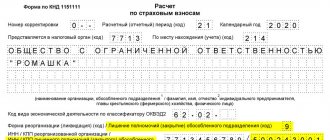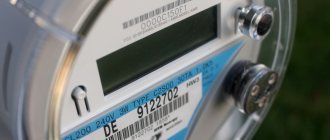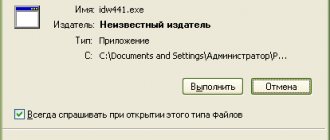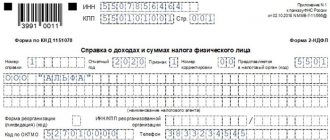Oddly enough, there are also types of taxes that are not so offensive to pay, because as a result, you still have the opportunity to use your hard-earned money, albeit a little later, or in emergency cases. This is the so-called single tax, which functioned as a single taxation system and was disbanded in 2010, but was not abolished, but simply transferred to different levels.
Now, instead of one payment, it is made through several and to different authorities. However, this does not have much effect on the payer himself.
Content
- How taxpayers replenish the budget
- Contributions for yourself
- We report to the state
- Individual entrepreneur on OSNO without employees
- Taxes for individual entrepreneurs on the simplified tax system without employees
- Individual entrepreneur reporting on UTII without employees
- Individual entrepreneur on the Unified Agricultural Tax without employees
- Reporting of individual entrepreneurs on a Patent (PSN) without employees
Important! Use our tax calendar. There you can always see all types of reporting and taxes that you need to submit.
Patent system (PSN)
PSN is the only special mode that cannot be used by organizations and is intended specifically for individual entrepreneurs. The taxes paid by individual entrepreneurs under this system are the direct cost of the patent itself, and it already equals 6% of potential annual income.
The types of economic activities that can be carried out thanks to a patent are noted in the Tax Code, but their list can be expanded by local governments. As in the simplified tax system, there are restrictions on the number of possible employees - no more than 15 people, and the maximum annual income - no more than 60 million rubles.
How taxpayers replenish the budget
When opening your own business, you must decide for yourself whether you will have hired staff. Usually, at first, entrepreneurs try to do large amounts of work on their own, without hiring an assistant for this. Also, the first months of activity do not always bring significant income, which does not allow hiring workers.
We will talk about those individual entrepreneurs who work without employees. The absence of people on staff does not exempt such figures from paying funds to the budget. The tax burden falls equally on the shoulders of any individual entrepreneur, and it depends on the chosen taxation system.
The general tax system called OSNO has the highest tariffs, and therefore is used by individual entrepreneurs. It is rare to find her among individual entrepreneurs without employees.
However, in practice, OSNO is automatically assigned to any entrepreneur upon registration. And if for some reason you did not write an application to use a different fee system, you will pay taxes according to OSNO.
These include:
- VAT (there are three rates equal to 0, 10 or 20%);
- Property tax (from 2021 in some regions it is calculated according to the cadastral value, and not the inventory value, as was previously);
- Personal income tax as an income tax.
The leader among tax systems is the simplified tax system.
If your state does not have employees, then you only need to pay one tax:
- In the amount of 6% of revenue (and all income of the enterprise is taken into account here);
- In the amount of 15% of the difference between income and expenses.
One of the frequently used taxes is UTII. The individual entrepreneur who uses it pays 15% of the basic income multiplied by special coefficients.
Individual entrepreneurs engaged in the field of agricultural products pay the Unified Agricultural Tax. It is calculated at 6% of the difference between the income and expenses incurred by the entrepreneur.
A relatively new area for entrepreneurs is working with a patent (PSN). Here a single tax is paid in the amount of 6% of potential income from activities in the region.
Local authorities can change the tax rate down to 0%. These are the so-called tax holidays, which give the right not to pay funds to the budget in the first two years after registration of an individual entrepreneur.
In addition to the listed rates, individual entrepreneurs pay additional tax payments depending on the type of activity. For example, transport tax must be paid if the company uses a car for commercial purposes, you pay land tax when using the site, and so on. These fees do not depend on the current tax system and are applied in conjunction with any of them.
If an individual entrepreneur does not have employees, then he does not need to pay personal income tax in the amount of 13% for hired workers. This tax is not paid for yourself. Pension contributions are made through mandatory contributions. The latter will be discussed further.
Is it possible to reduce taxes and how to do it?
If there is a need to give, then an opportunity to return is always sought. Unified social tax must be paid, but you also need to take into account the possibility of slightly reducing this percentage.
Such small tricks apply more to the first group of payers, since it is from them that the state receives the largest sums (and this is understandable, because the more employees there are in an enterprise or firm, the greater the deductions). Thus, it is possible to reduce the amount of deductions by making certain expenses towards the state social insurance. The tax will be slightly lower, although not as much as we would like.
You can also significantly reduce the tax if you have employees with varying degrees of disability on your staff (to receive preferential treatment, the number of them at the enterprise must be more than the percentage specified in the law). Yes, and such areas of work as IT or engineering are very encouraged today, therefore, they also enjoy certain discounts and benefits.
But the single tax for individual entrepreneurs will already be the smallest among all, since specific payments are fixed for them, and they are significantly less than for company employees.
Modern changes
If the single tax already included 26% of all payments that workers and entrepreneurs should receive for their honest work, then already in 2014 this figure jumped to 34%. In fact, this is a lot and such figures could significantly improve the standard of living of the average citizen.
Many people don't think about the actual payroll tax costs companies pay. For example, receiving approximately twenty thousand a month, ten of your hard-earned money goes towards paying taxes. But it could have been thirty! And this is not to mention the fact that when the annual salary passes the line of 537 thousand rubles, an additional rate of 10% is assigned (a total of more than 40%!).
Having understood a little about what a single tax is, you can understand: where, to whom, and most importantly - how much, you deduct from each of your income to the above-mentioned funds.
In addition, you should understand how to pay a single tax, because the procedure itself is also very important - its violation may entail the need for closer communication with the tax authorities and these funds.
Since 2013, new accounts began to operate, which, now separately, accept transfers for each of the subtypes of tax. They open in the treasury, and if you previously paid differently, now all the characteristics and accounts have completely changed. As befits an innovation, this scheme did not start working correctly immediately in 2013, and we had to wait a little longer to receive all the required account numbers.
Thus, today the system is somewhat complicated by the lack of one specific or percentage amount of income, therefore, many entrepreneurs will need the professional services of accountants and economists. In this situation, it is much easier for individuals, since taxes and deductions for them are made by the employer.
Become an author
Become an expert
Contributions for yourself
Without employees, you are still required to make contributions to insurance funds. In this case, the payment is transferred only for the owner of the individual entrepreneur.
It is necessary to transfer money to the pension and health insurance fund. Contributions to the Social Insurance Fund are voluntary, and therefore their use among individual entrepreneurs without employees is sporadic.
Previously, payments were made directly to extra-budgetary funds. Since 2017, there have been changes that have made the tax office an intermediary in such calculations. Now her accounts accumulate not only tax revenues, but also mandatory insurance contributions. This simplified control over taxpayers by government agencies.
Since 2021, contributions to the pension and health insurance fund have become fixed, regardless of the minimum wage. This was done in the interests of entrepreneurs and in order to reduce the tax burden.
Their amount became equal to 36,238 rubles, including: 29,354 rubles paid for contributions to pension insurance and 6,884 rubles for medical insurance.
However, these are not final calculations. If at the end of the year the entrepreneur’s profit amount is more than 300,000 rubles, then 1% of the difference between the actual profit and 300,000 rubles is additionally paid to the pension fund. For example, your income for the year amounted to 485,000 rubles. In addition to 36,238 rubles, you will also pay (485,000 - 300,000) * 1% = 1,850 rubles.
Contributions of individual entrepreneurs without employees are subject to mandatory payment along with taxes. Every entrepreneur is obliged to transfer funds to insurance funds, regardless of whether he has made a profit or whether the individual entrepreneur operates only according to documents.
A fixed payment of 36,238 rubles must be made for 2021 by December 31, 2021. Payment of 1% for income over 300,000 rubles must be made before July 1, 2021.
There is also a maximum limit for funds that can be contributed to insurance funds. This amount is calculated as follows: 8 * 29,354 * 12 * 26% . Where 29,354 is a fixed amount deducted for pension insurance. The limit on the amount of contributions for 2021 will be 234,832 rubles. This amount includes both the fixed part and the percentage excess from income of more than 300 thousand rubles.
Unified social tax - what is it?
So, what is a single social tax? As a rule, it meant the consolidation of tax payments into social state funds, which are designed to worry and take care of us if necessary. Of course, no one was going to do this at their own expense or, especially, at the expense of the state, so you need to put a “penny” into each of these funds.
Social funds include:
- Pension Fund of the Russian Federation;
- Insurance Fund;
- Health insurance funds (both levels of their existence are included here: federal and regional).
Thus, a single tax is 20% of the total amount of income received, which is deducted from the Pension Fund, 3.2% goes to social insurance, 2% goes to the regional fund, and 0.8% goes to the federal health insurance fund. That is, a considerable amount is already obtained from what you should have received directly as a result of painstaking work. But that’s not all, since there are payments that are not included, although they are similar in functionality, to a number of the funds described above. For example, contributions for insurance against industrial accidents, which are directly transferred to the federal social insurance fund.
We report to the state
The activities of any entrepreneur are impossible without various calculations and correlation of income with expenses. You must declare your taxes and contributions to the appropriate authorities, having with you a form with calculations of the amounts. Each taxation system has its own reporting features.
We have prepared a table for you on the deadlines for submitting reports for 2021.
| Tax system | What kind of reporting? | Deadlines |
| OSN | VAT declaration (transmitted only in electronic format, starting from 2015) | For 2021 quarterly - April 25, July 25, October 25 and for the 4th quarter January 27, 2021 |
| OSN | Declaration in form 3-NDFL | Until April 30, 2021 (for 2021) |
| OSN | Declaration for 4-NDFL (about future profits) | From one to 5 days after the end of the month in which the profit was made |
| simplified tax system | Declaration according to the simplified tax system | Until April 30, 2021 (for 2021) |
| UTII | Declaration on UTII | Once a quarter until April 22, July 22, October 21 and January 20, 2021 (for the 4th quarter of 2021) |
| Unified agricultural tax | Declaration of Unified Agricultural Tax | March 31, 2021 upon submission of the report for 2021 |
| PSN | Not provided | — |
You can read about how to fill out declarations below:
- How to fill out the 3-NDFL declaration;
- How to fill out the 4-NDFL declaration;
- How to fill out the simplified tax system “Income” declaration;
- How to fill out the simplified taxation system “Income minus expenses” declaration;
- How to fill out the UTII declaration;
- How to fill out the Unified Agricultural Tax declaration.
In addition to generally accepted reporting in the form of a declaration, each individual entrepreneur, regardless of the tax system, maintains internal reporting. By the end of the year, the book of income and expenses should be put in order: the tax office may need it at any time.
An individual entrepreneur without employees does not report to extra-budgetary funds. Such entrepreneurs have a responsibility only to the tax authority.
Now let's look at the tax payment dates and some of the features of reporting on each tax system.
Individual entrepreneur on OSNO without employees
If you practice OSNO, you can combine this taxation system with:
- UTII;
- PSN.
At the same time, separate reports are submitted for each tax and different calculations are made. We have listed payments to the tax authority for individual entrepreneurs on OSNO without staff in the table.
| What taxes does an individual entrepreneur pay without employees? | Bid | Formula | Individual entrepreneur reporting without employees and payment |
| VAT | 0%, 10% or 20% (depending on the product category) | Product cost*20/120 |
Pay by the 25th day of the month following the reporting quarter |
| For property | Up to 2.2% (set by local laws) | Depends on object criteria | No reporting provided. Payment for 2021 – until December 1, 2021 |
| Personal income tax (from profit) | 13% | (Income - expenses)*13% |
Pay advances based on quarterly notifications from the tax office before July 15, October 15 and January 15 |
If you are a taxpayer of other fees, then you must pay them in accordance with notifications from the tax office, and if there are none, on your own initiative.
Let's take an example of paying VAT in 2021. If you are a taxpayer of other fees, then you must pay them in accordance with notifications from the tax office, and if there are none, on your own initiative.
Example. You bought a product from a seller on OSNO for 15,700 rubles in February 2021. The product was sold in the same month for 20,000 rubles. VAT on the purchase price will be: 15,700*20/120 = 2,616.67 rubles. Now let's calculate the amount of tax that needs to be paid to the budget: 20,000 * 20/120 - 2,616.67 = 716.66 rubles. If there is no more turnover in the company, then this amount must be transferred to the budget before April 25, 2021.
OSNO adherents without employees have the opportunity to reduce personal income tax (profit) payable as follows:
- At the expense of social deductions for an individual (for example, for one’s own education or treatment in medical institutions for oneself and immediate relatives. The total amount of deductions cannot exceed 120,000 rubles combined with other expenses);
- Due to contributions to insurance funds paid quarterly.
Example. The total profit for the year was 743,000 rubles. Confirmed expenses associated with activities – 516,000 rubles. Contributions paid to insurance funds amount to 27,990 rubles. The total tax for the year is: (743,000 8)*13% = 24,799.06 rubles.
Who pays the single tax
It is imperative to understand who pays the unified social tax. As a rule, everyone who works must pay, be it an organization or an employee. In order to make the payment procedure more understandable, the state divides all payers into two categories:
- Employers who regularly pay salaries and other types of payments to their employees (and it makes absolutely no difference whether it is an individual (IP) or a legal entity).
- Employees who receive such salaries and payments (this also includes the Unified Social Tax for individual entrepreneurs).
A situation may arise when both categories coincide simultaneously in one person. Here the tax authorities do not understand, but simply tax it at both levels, on different grounds.
Also, it is very interesting that if you make a profit from your own activities, that is, you are an individual entrepreneur, or are engaged in family, traditional industries, or you are a lawyer, then you have every right not to pay that part of the tax that relates to the social insurance of the Russian Federation . But all other payments still remain mandatory, so there is no reason to relax yet.
Taxes for individual entrepreneurs on the simplified tax system without employees
Taxes for individual entrepreneurs without employees include deductions from the company’s income. There are two tax calculations on the simplified tax system, which we have displayed in the table.
| Formula | Tax payment deadlines | Reporting |
| Income*6% | For 2021 – until April 30, 2021 |
|
| (Income - expenses)*15% | For 2021 – until April 30, 2021 |
|
Example. In 2021, you earned 735,000 rubles of retained earnings. The simplified tax system “Income” is used. Therefore, the tax payable will be 735,000 rubles * 6% = 44,100 rubles. It is necessary to transfer funds to the tax account by April 30, 2021.
Using the simplified tax system, an individual entrepreneur without employees can reduce the amount of tax payable or the tax base. The first option is suitable for the simplified tax system “Income”, and the second – for “Income - expenses”.
Example. Let’s say an entrepreneur practices a simplified income tax without employees at a rate of 6%. Income for the year amounted to 692,000 rubles. Tax payable: 692,000 * 6% = 41,520 rubles. The individual entrepreneur paid contributions of 36,238 rubles for the year. He has the right to reduce the amount of tax by the entire amount of payment to extra-budgetary funds. We get a tax equal to: 41,520 - 36,238 = 5,282 rubles. If the amount of insurance premiums exceeds the tax, then the latter is not subject to payment.
If an entrepreneur applies the simplified tax system “Income - Expenses” at a rate of 15%, then the amount of insurance payments is deducted from the tax base.
Example. If income was 924,000 rubles for 12 months, expenses were 699,000 rubles, and contributions to funds were made for a fixed amount of 32,385 rubles, then the tax is calculated as follows: (924,000 * 15
% = 28,314 rubles.
What is included in the object of taxation
Considering that UST is a tax paid separately by different categories of persons, it is necessary to separate objects according to them. Thus, the first category receives an obligation from the state to take money from:
- any payments accrued to employees in connection with their work activities. This may even include remuneration that employees must receive under civil contracts. Injustice, as it seems, but let it console you that you can still use this money, although not soon or if an insured event occurs.
- payments that an employee receives in the form of financial assistance. Alas, this includes all possible gratuitous receipts of money that are not covered by an employment or civil contract. That is, they are not so gratuitous, actually.
But even taking this into account, there are still some opportunities where the unified social tax is not subject to the required deduction. So, for example, an employer has the right to reward or simply encourage, give his employees something, the amount of which does not exceed 1000 rubles (more than that will have to be shared with the state). But this “something” must be paid in kind, that is, in products, children's things and the like. Also not included in the single tax are the amounts of payments that can be transferred from the employer if they are paid after taxes on income are paid. However, such payments are most often a fantasy, because who would want to share their own money just like that?
The second group of unified social tax (remember that these are individuals who work for themselves) must pay a single social tax from the amounts:
- those that a person receives from engaging in any professional activity (this can be working for someone in the office, or personal entrepreneurship, but without additional participation “in share” of neighbors, friends or anyone else). These amounts do not include only the funds that were used to directly benefit from the work. That is, we can say that the single tax on individual entrepreneurs will be calculated as a percentage of “net” income;
- that are indicated in the cost of a patent purchased for carrying out any activity. Of course, this applies only to those who switched to a simplified tax payment system and acquired a patent, that is, a single individual entrepreneur tax.
Individual entrepreneur reporting on UTII without employees
The use of UTII is limited to areas of activity that are specified in regional regulations.
To calculate the tax, the following formula is used:
B*FP*k1*k2*15%, where:
- B – basic profitability of one month per unit of physical indicator;
- FP is a physical indicator used for business purposes (this can be the area of a retail outlet, the number of stores, etc.);
- k1 – coefficient established on an annual basis by the Government;
- k2 – reduction coefficient registered once a year by local authorities (varies from 0.005 to 1).
Tax payment occurs in quarterly payments until the 25th day of the month following the end of the quarter. Let's look at paying taxes in 2021 using an example.
Example. Basic income for the 1st quarter of 2021 is 7,500 rubles monthly. The number of employees equal to 7 is used as a physical indicator. K1 for 2021 is 1.915, and as a basis for k2 we will take the value of 0.6. Imputed income, taking into account the number of people on staff, will be: 7,500 * 7 * 3 = 157,500 rubles per quarter. Next, we adjust the income by correction factors – K1, K2. The calculation is as follows: 157,500 * 1.915 * 0.6 = 180,968 rubles. And the last stage is the tax: 180,968 * 15% = 27,145 rubles.
According to UTII, individual entrepreneurs without staff have the opportunity to reduce the amount of tax on contributions to extra-budgetary funds. You can reduce the tax payment for the quarter in which the advance payment was made to extra-budgetary funds.
Example. You paid contributions in the first quarter in the amount of 7,000 rubles. Let's take the tax from the example above. For the first quarter it is equal to 27,145 rubles. Total amount to be paid taking into account the contribution: 27,145 - 7,000 = 20,145 rubles.
Individual entrepreneur on the Unified Agricultural Tax without employees
Unified agricultural tax can be applied only by those individual entrepreneurs who conduct activities related to the production of agricultural products. With this taxation system, the process of doing business is significantly simplified due to minimal reporting and a low tax rate.
| Formula | Payment | Reports |
| (Income - expenses)*6% | Advance payments for half a year. The first payment for 2021 is due July 25, 2021, the final payment is due March 31, 2021 |
The declaration under the Unified Agricultural Tax is submitted before March 31 of the year following the reporting year. For 2021, the report must be submitted by March 31, 2021. |
| VAT – 20% (introduced from 01/01/2019. You can take advantage of the exemption in accordance with Article 145 of the Tax Code of the Russian Federation, paragraph 2, paragraph 1) | Payments are made quarterly, before the 25th day of the month following the reporting quarter. |
|
Let's look at the example of paying for the Unified Agricultural Tax in 2021 for an individual entrepreneur without staff.
Example. For the first 6 months of activity, the income amounted to 380,000 rubles. Expenses for this period were confirmed in the amount of 200,000 rubles. Income for 2021 was 625,000 rubles, and expenses were 392,000 rubles. Tax amount for the first half of the year: (380,000 - 200,000)*6% = 10,800 rubles. It must be paid by July 25, 2021. Annual tax that must be paid before March 31, 2021: (625,000 - 392,000)*6% - 10,800 = 3,180 rubles.
Individual entrepreneurs who practice unified agricultural taxation and do not have hired staff can reduce the tax base for contributions to extra-budgetary funds for themselves. The part of the payments that you made in advance can be taken into account as expenses.
Example. To calculate taxes, let's look at the previous example. The amount of income for the first 6 months of activity is 380,000 rubles, and expenses are 200,000 rubles. Let's say you paid 14,000 rubles in contributions. The tax payable will be: (380,000 0)*6% = 9,960 rubles.






